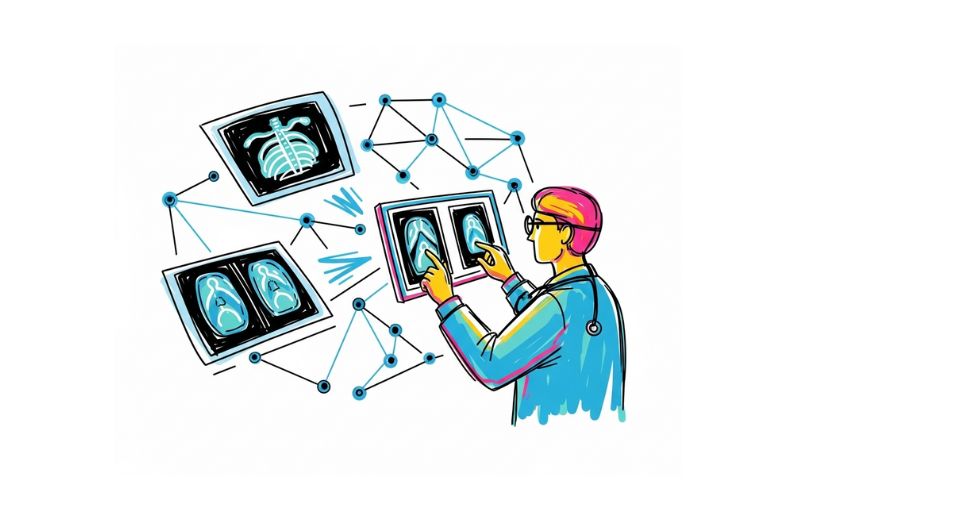
Sep 09, 2025

The newly released global teleradiology market report by Metastat Insight places the focus on an environment that is driven by ongoing technological improvement and changing expectations among healthcare networks. This is one presentation of industry trends that best describes the dynamic of an industry no longer operating as an auxiliary service but as a mainstay of contemporary diagnostic processes. The research captures not only the growth of remote radiology services but the subtle manner in which connectivity, clinical precision, and workflow integration are converging into a single direction. The report illustrates how communication platforms, image transmission technology, and specialist collaboration have radically changed the nature of diagnostic imaging beyond geographical parameters.
What unfolds is an observation of transition, in which medical professionals are shaping infrastructure to enable nondisruptive cross-border consultations. The worldwide teleradiology market is today typified by more integrated networks that minimize geographic imbalance in access to expertise. Major institutions and smaller health facilities alike are embracing solutions that allow instant sharing of images, hence alleviating the workload on in-house radiology departments. This has resulted in a system whereby expertise is available without being tied to one physical site. The report illustrates the sophistication of these models while also underlining the value brought by streamlined coordination between multiple stakeholders.
Another significant dimension evident in the report is the manner in which advancements in imaging technology align with telecommunications improvements. The rise of high-quality digital image capture, storage, and retrieval methods has allowed radiologists to maintain precision while reviewing scans remotely. In parallel to this, increased availability of bandwidth at high speeds and cloud-based architectures have facilitated real-time collaboration across zones. This has altered the vision of service efficiency, where trends now center around real-time support, error minimization, and uniform patient management results. The teleradiology market globally has long left behind mere remote observation, becoming a more integrated and quicker system of care provision.
The report also highlights the increasing significance of interoperability. Healthcare systems with different technical standards are now needed to share information effortlessly. Vendors and service providers are putting money into guaranteeing compatibility across different platforms, thus reducing the complexity of integration for end users. This harmonization has a direct bearing on the success of worldwide collaboration since it eliminates barriers that previously affected the free transfer of radiological information. The international teleradiology market is therefore not merely growing in volume but also developing in terms of quality control and technical standardization.
One of the patterns noticed in the report is the variety of uses that are going beyond traditional diagnostic applications. Sub-specialties like oncology, neurology, and cardiology are reaping tremendous advantages from image sharing that is facilitated through greater enhancement, allowing highly specialized consultations even if the expertise is thousands of miles apart. This scope of application is driving deeper understanding of teleradiology as a technology that maximizes value across various fields. Through capturing these details, the study highlights how the world market for teleradiology is reshaping collaborative medicine.
Metastat Insight asserts that the trajectory of the market is no less driven by the initiatives of stakeholders, who are identifying ever more effective models of service delivery. Academic centers, private corporations, and health regulators together are defining a system that fosters growth while ensuring quality. Balancing commercial acumen and clinical responsibility continues to be a point of emphasis, as noted throughout the report. It is this dynamic that is most crucial to grasping the larger context in which the international market for teleradiology operates today.
The research also captures how training and education are evolving as a reaction to mass scale adoption of remote radiology. Technology being in the lead, radiologists now interact with ongoing learning systems that equip them with tools for hybrid work environments. This adjustment in the profession is indicative of long-term sustainability for the industry as professionals correlate their skills with both technical and clinical demands. The international teleradiology market, as depicted by Metastat Insight, does well not only due to technological backing but also due to the readiness of professionals adopting this care model.
There is also attention to how infrastructure spending relates to service dependability. Advanced imaging platforms and advanced data security systems ensure that patient records are secure during transfer. The report gives an overview of how healthcare providers are addressing this aspect, understanding that credibility is a function of how sensitive information is protected. Therefore, the global teleradiology market is positioned as a secure and dependable solution, supporting practitioner and patient confidence.
Wrapping up the presentation, the global teleradiology market report by Metastat Insight reflects on an industry that has moved beyond conventional boundaries to become a pillar of networked healthcare. The research depicts an environment in which integration, advanced technology, and interprofessional practice are increasingly defining the game. In integrating various perspectives, the report presents an expansive image of how this market is becoming a fundamental component of contemporary medical infrastructure.
Drop us an email at:
Call us on:
+1 214 613 5758
+91 73850 57479